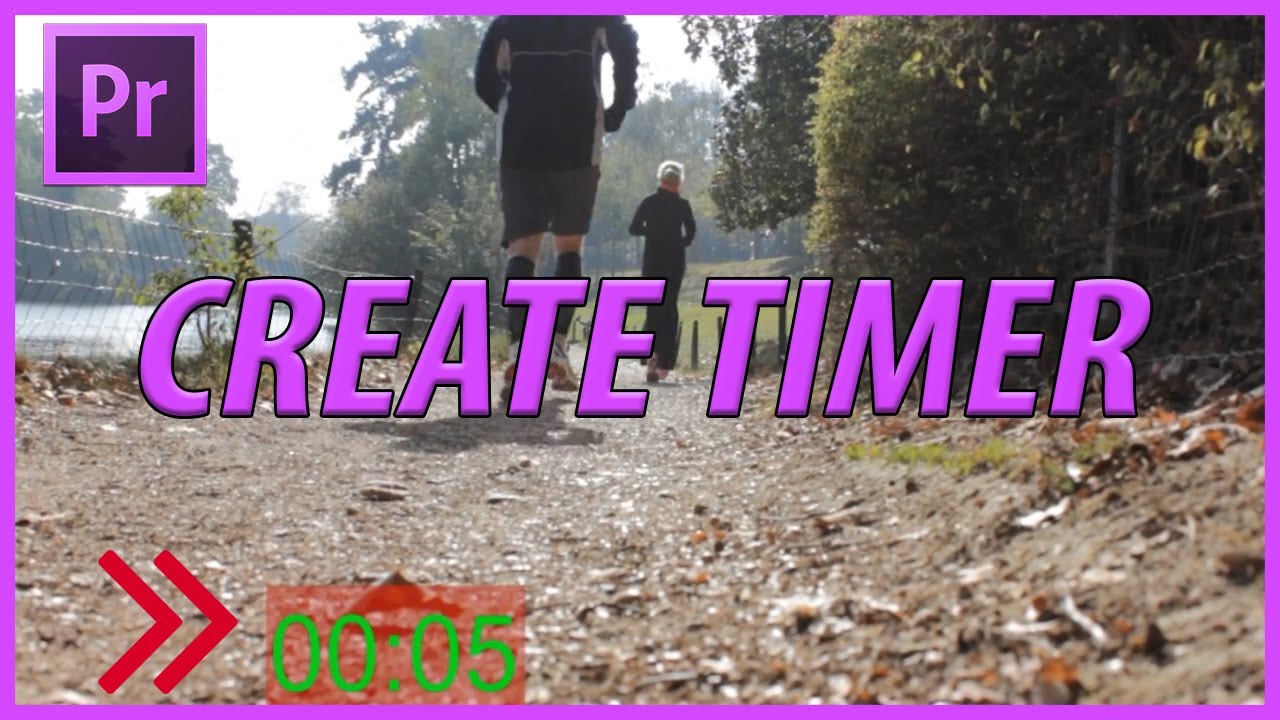

Taking it higher will introduce more blur, while lowering it will reduce the blur. Step 3: Adjust the Shutter AngleĪctivating the motion blur is as simple as deselecting Use Composition’s Shutter Angle, and then setting the Shutter Angle to whatever you want. Once animated, I’m ready to turn on the motion blur. For this example, I’ll animate the X position, making the logo move from side to side at a quick pace. The Transform effect gives me a number of keyframable properties, including many of the same attributes available in the Motion tab of the Effect Controls panel. I’ll grab the Transform effect and drop it over my logo clip in the timeline. Next, I’ll navigate to the Video Effects > Distort subfolder.
#Premiere pro timer effect how to
How to Add Motion Blur in Adobe Premiere Pro Step 1: Add the Transform Effectįirst, I’ll open up the Window > Effects panel. Let’s take a step-by-step look at how to make it work by animating Premiere’s logo. And, this option does give users a natural directional motion blur, without excessive keyframing and tweaking. Premiere Pro users needn’t fret, as there’s indeed an option to enable motion blur - just not a straightforward one.

Why offer up so many tools for graphics and keyframing when you can’t add and manipulate one of the foundations of motion? Even when searching the plethora of tools in their powerful Essential Graphics panel, there’s no option to enable motion blur. Much to their frustration, motion blur is nowhere to be found in this powerful NLE. Leaving it out will lower your production value.Īdobe Premiere Pro users understand the importance of motion blur far too well. The advanced composition settings in AE give users even more control, allowing adjustments for shutter angle and a handful of other properties.Īgain, these tools are important because motion blur breathes life into your image. For example, in Adobe After Effects, it’s as simple as clicking a master motion blur button and then activating the blur for each individual layer. When creating animations or working with motion graphics, you can simulate and make adjustments to motion blur. Bringing it lower will give you the opposite effect. The higher you bring this number, the more motion blur you’ll introduce into your image.


We measure shutter angle in degrees, with 180 degrees being the standard (roughly equivalent to a shutter speed of 1/48 at 24fps). For example, if I’m shooting at twenty-four frames per second, then I’ll use a 1/48 shutter speed (24fps x 2 = 48). For shutter speed, simply double your frame rate and plug that number into the denominator of your shutter speed. Of course, there are practices to help match the normal motion blur “look” achieved by the human eye. When you make adjustments to the shutter, you’ll change the look of your image. Both shutter speed and shutter angle control how much light connects with the sensor over a specific period of time. When shooting video and photos, you control motion blur via the shutter speed or shutter angle of the camera. When viewing the world around you, you’ll naturally see a blur effect, as objects are moving past at a rapid pace. Let’s take a closer look at this visual phenomena. It’s also something that you can manipulate for creative purposes, so it’s important to understand how it works. When shooting video or creating animations and motion graphics, motion blur is one of the fundamental elements that creates realism in an image.


 0 kommentar(er)
0 kommentar(er)
